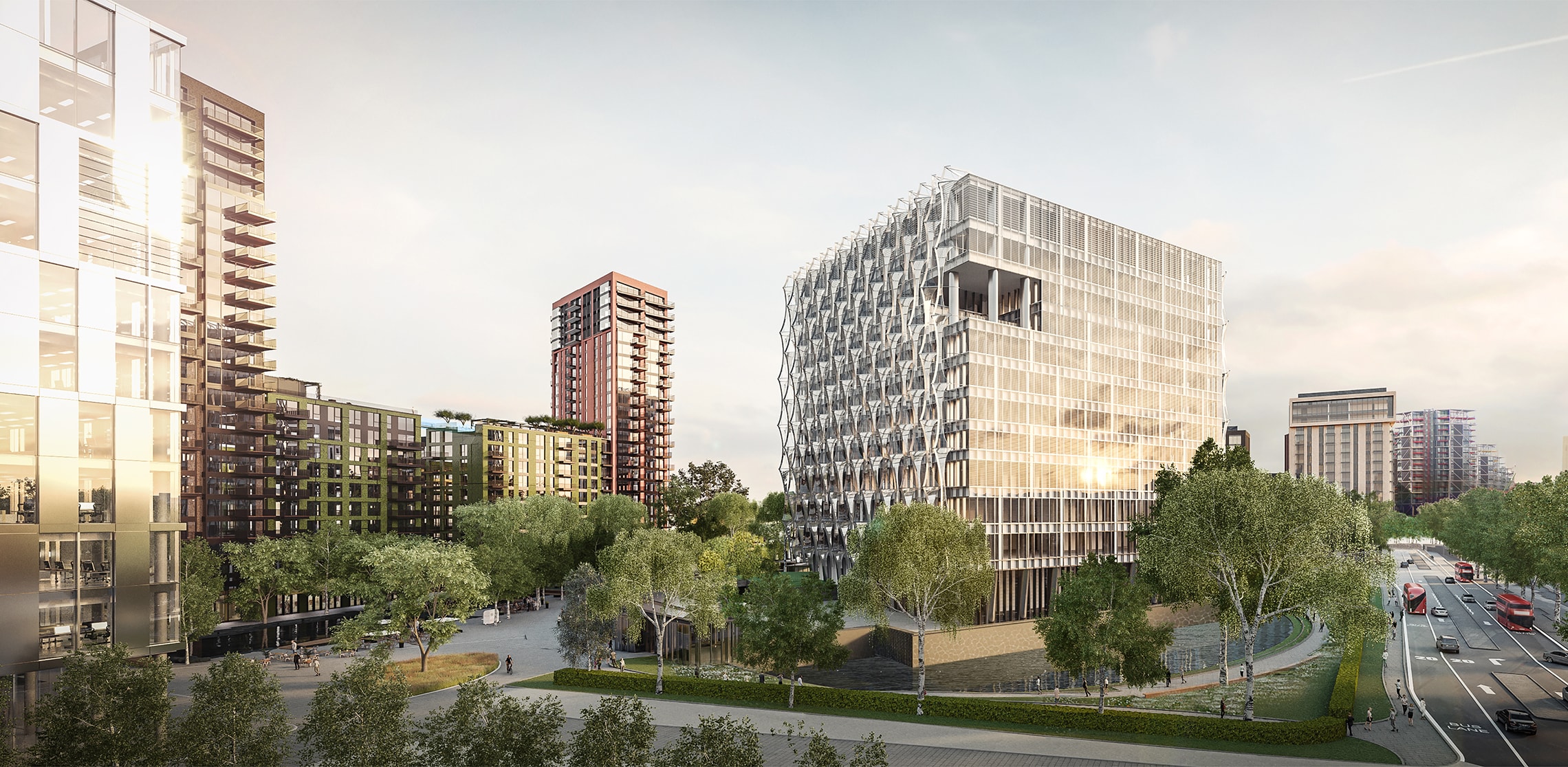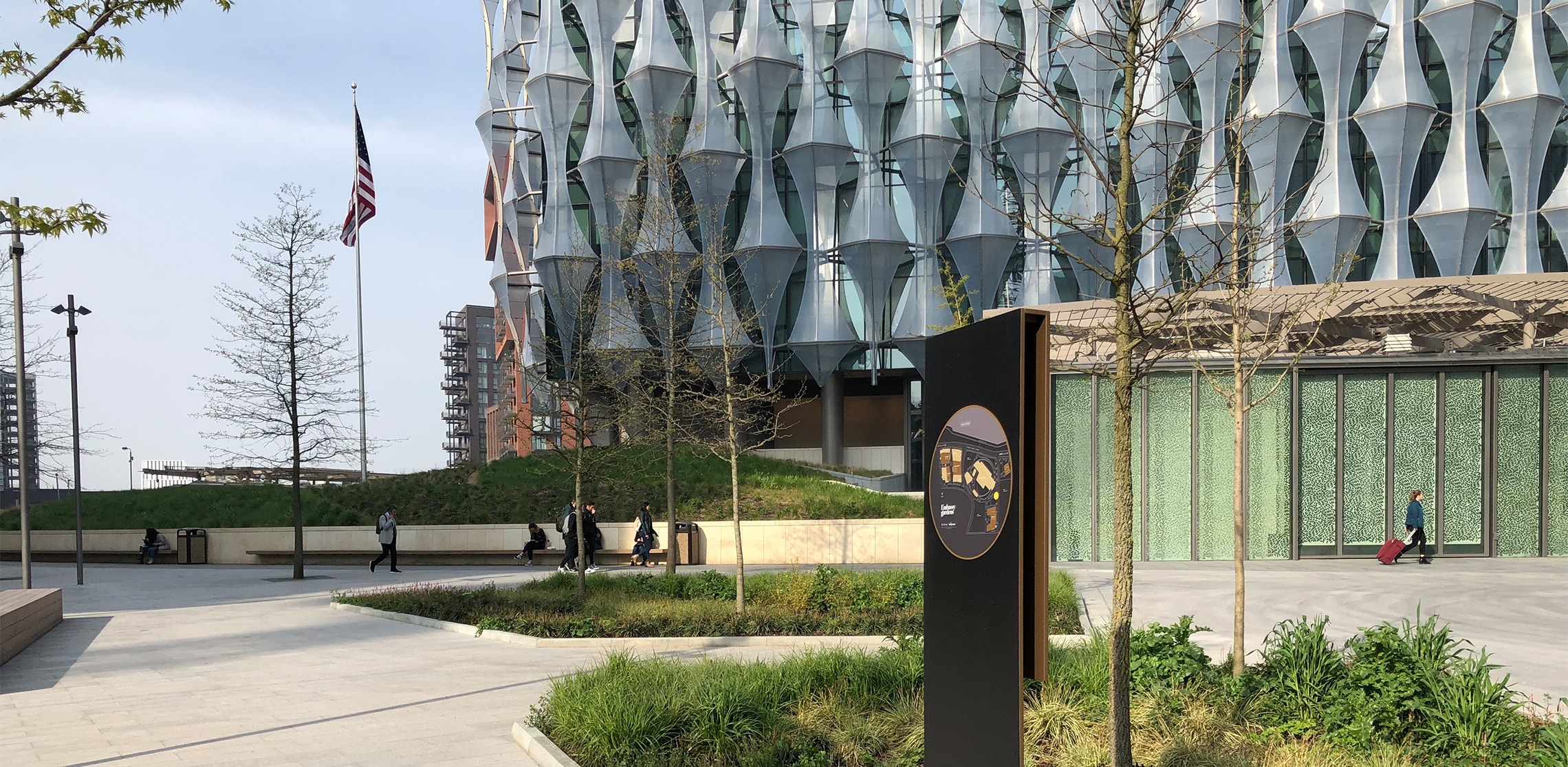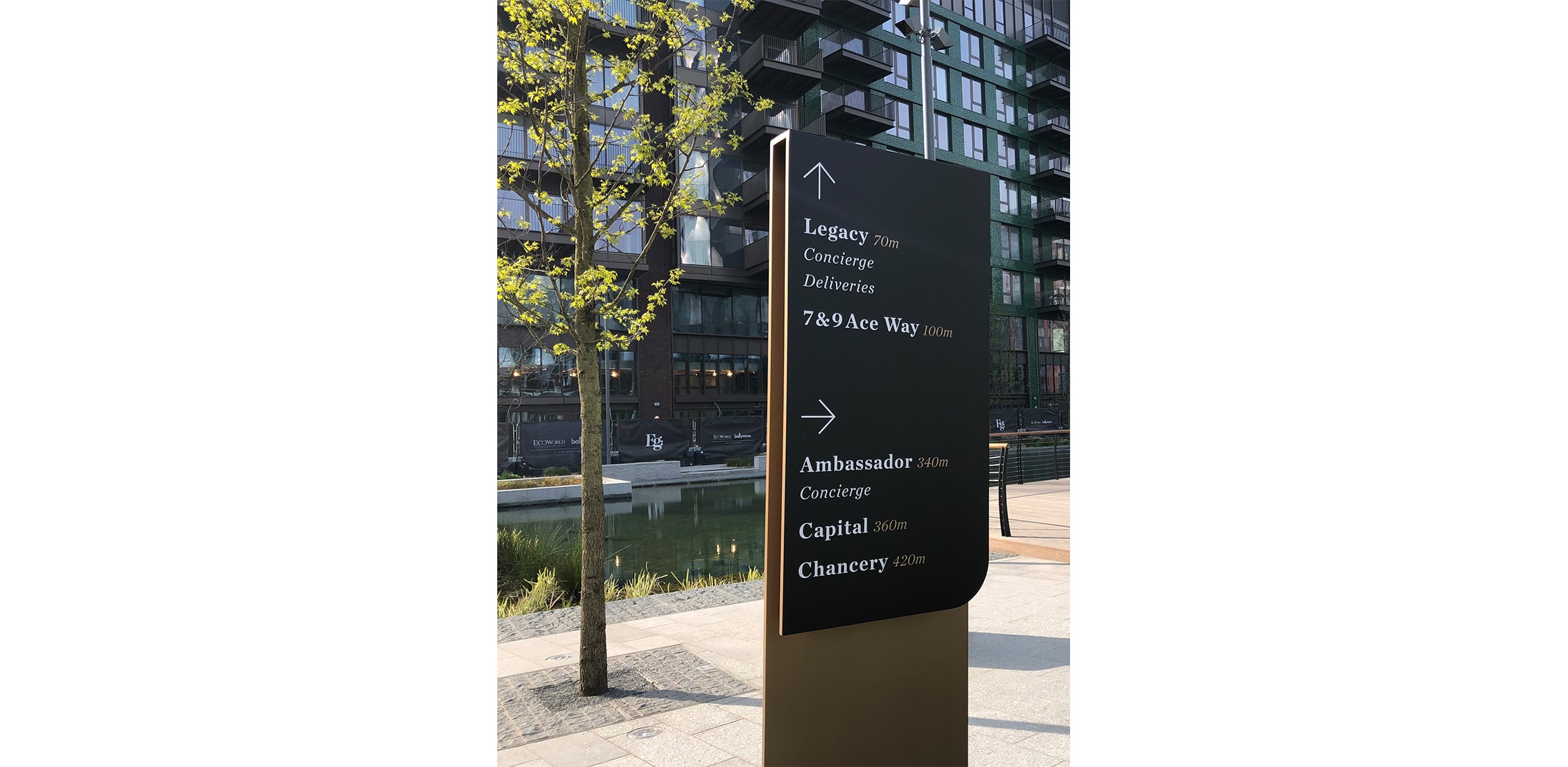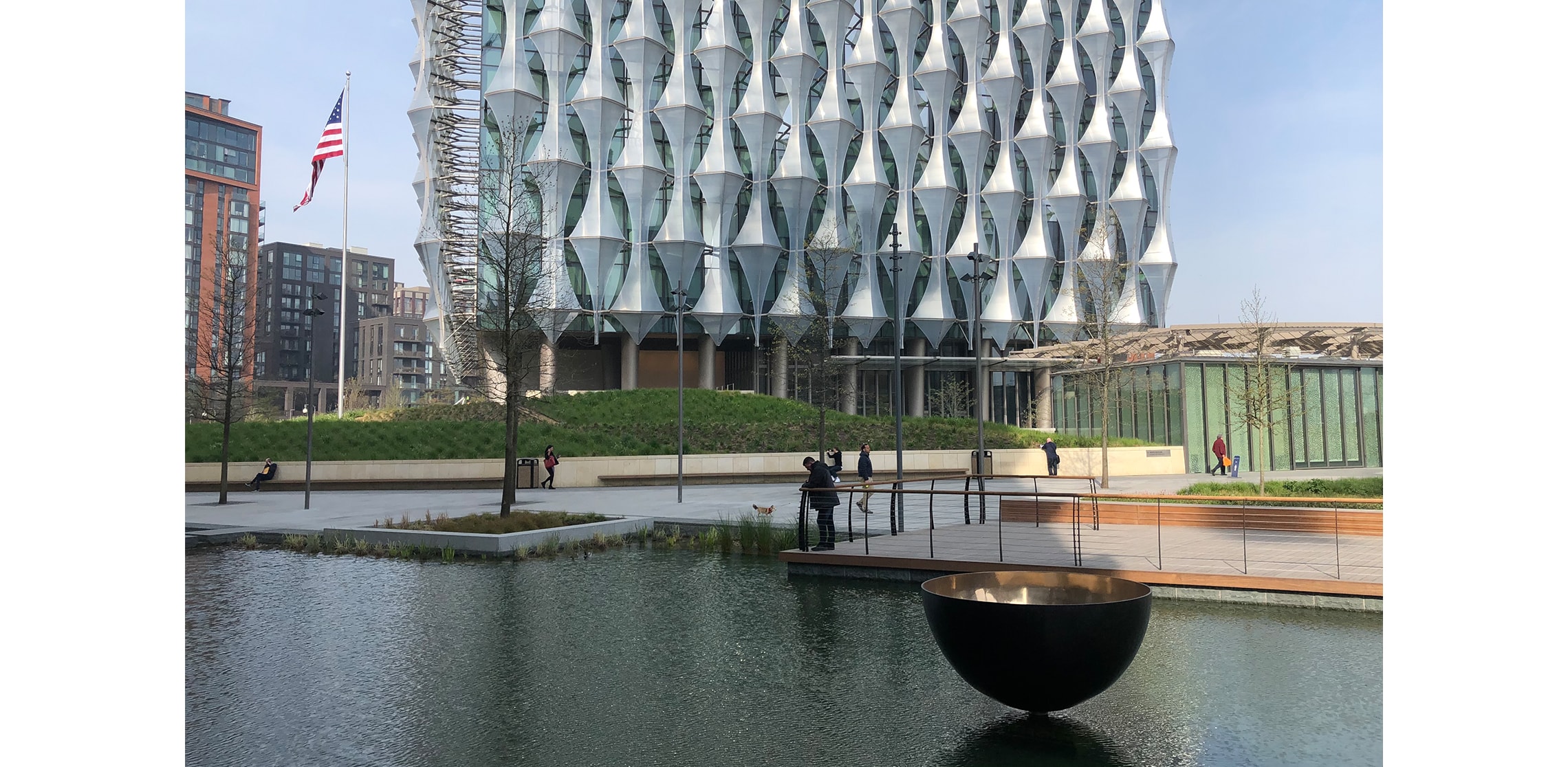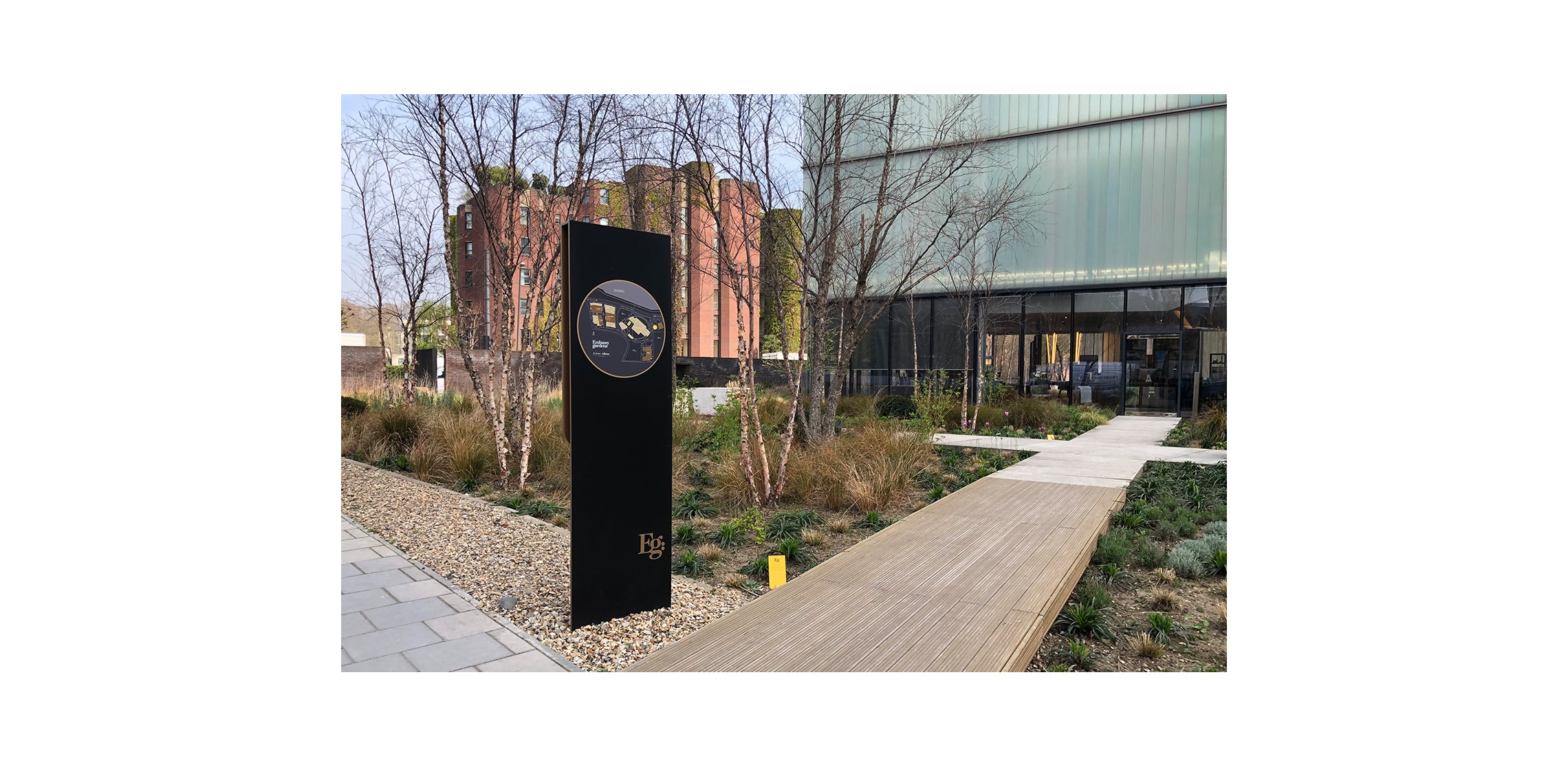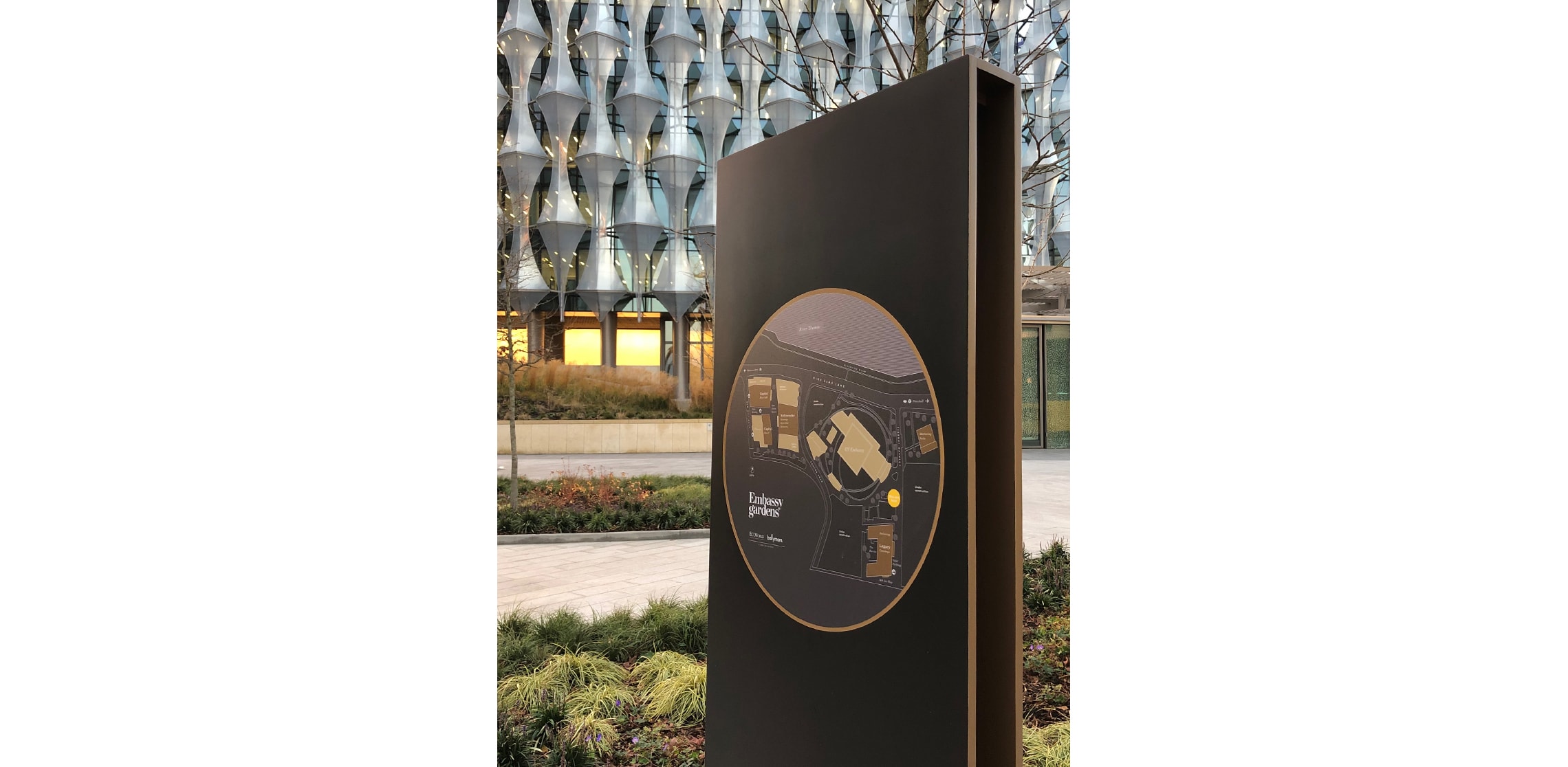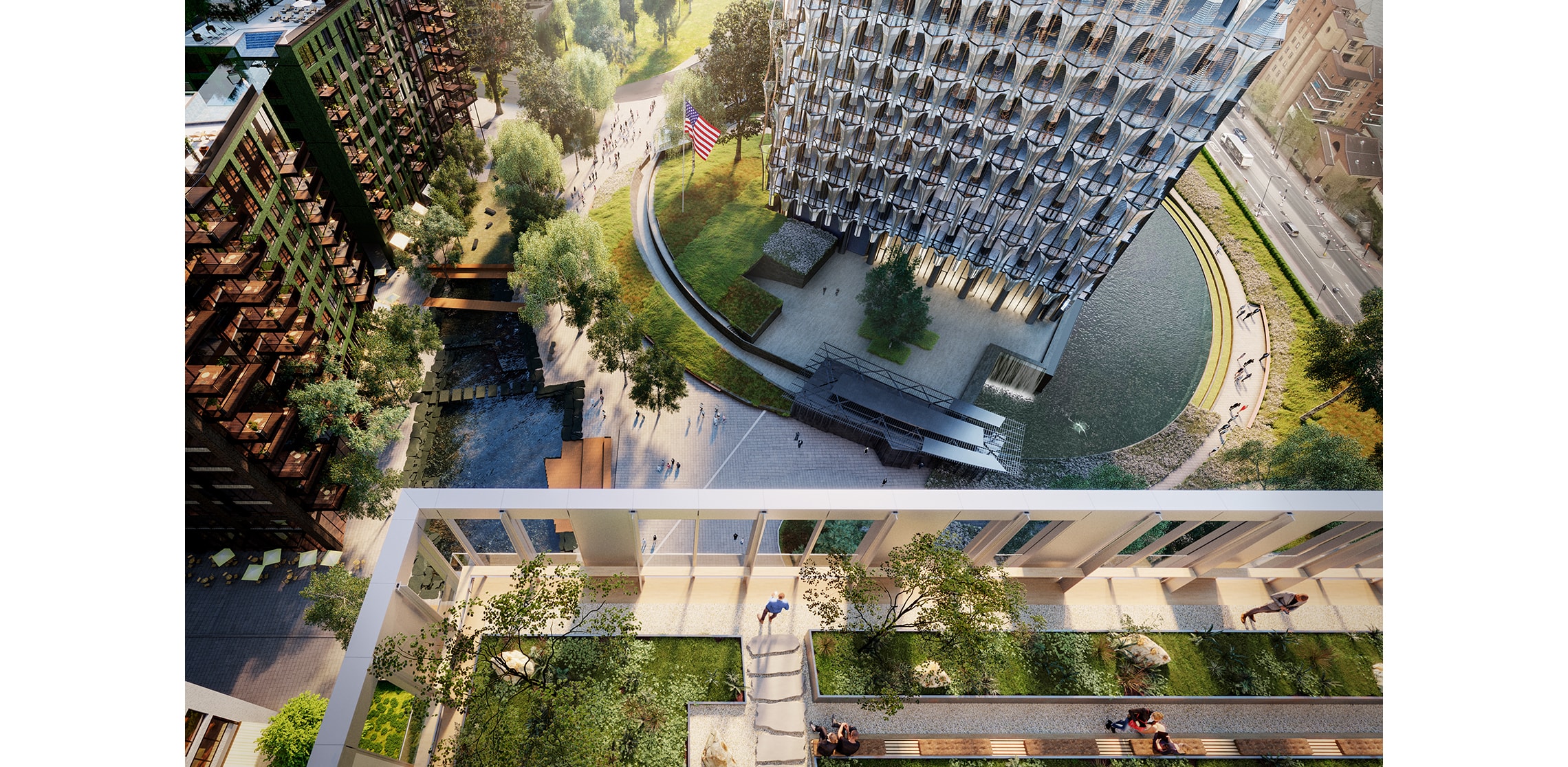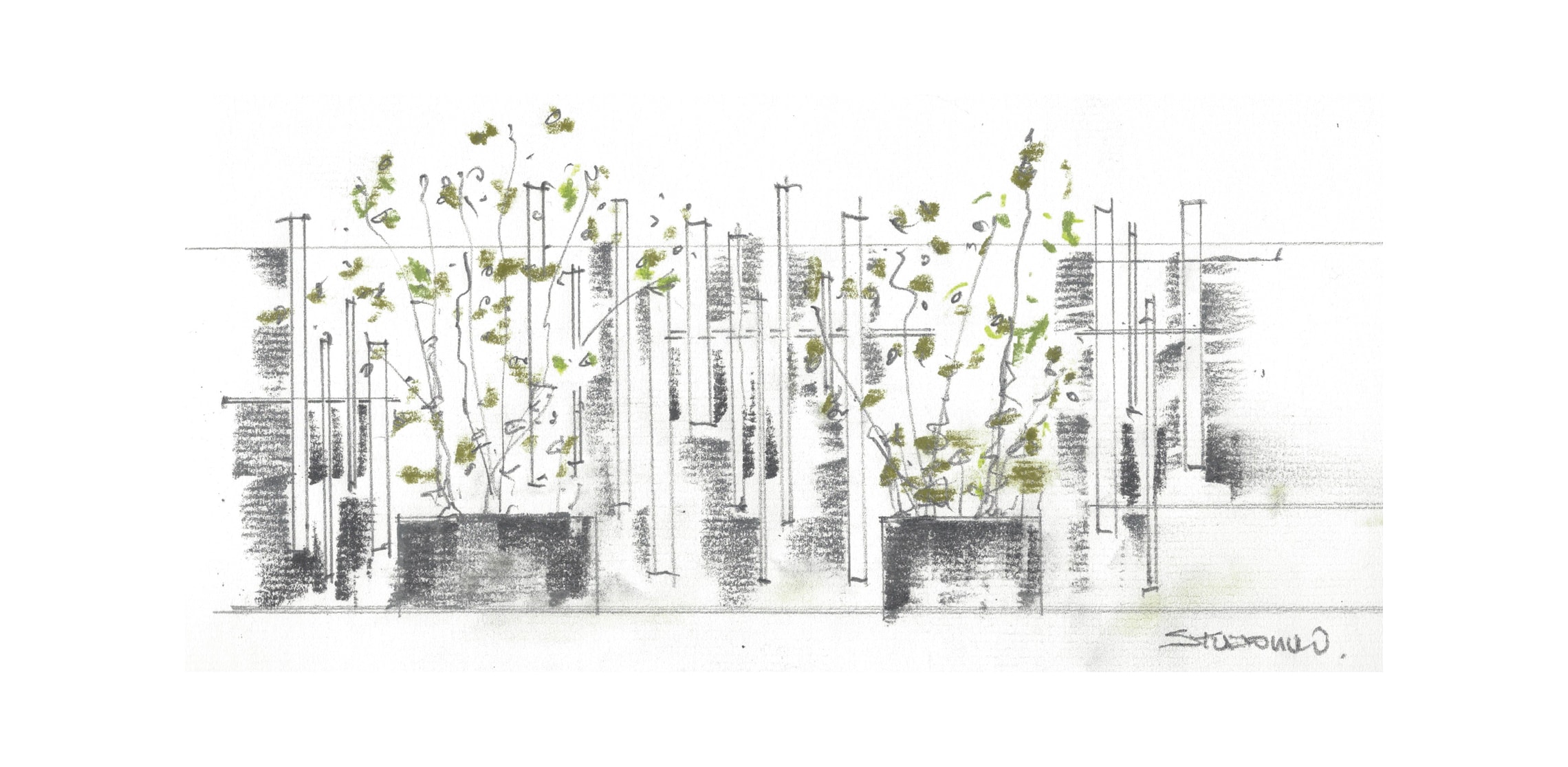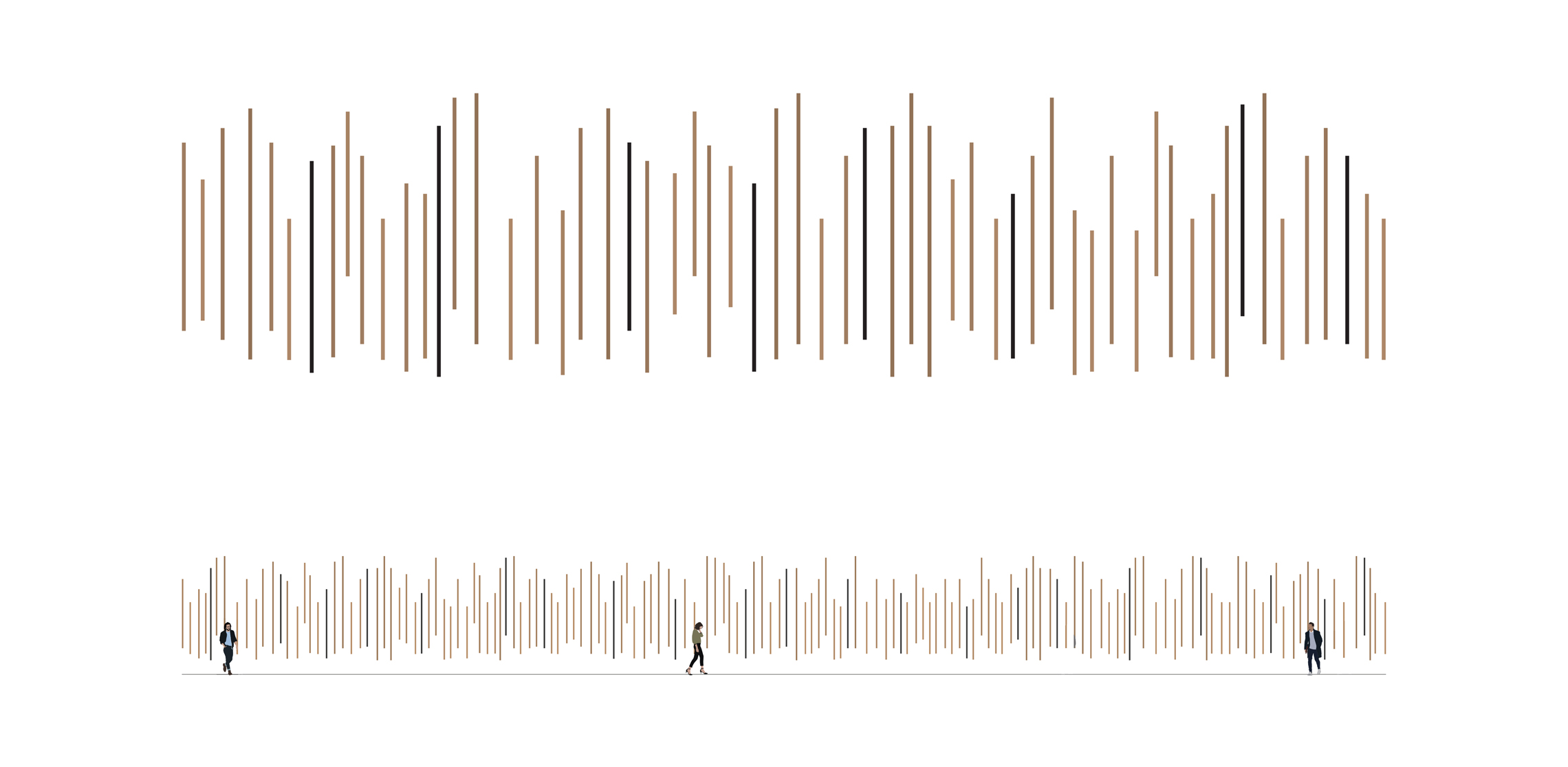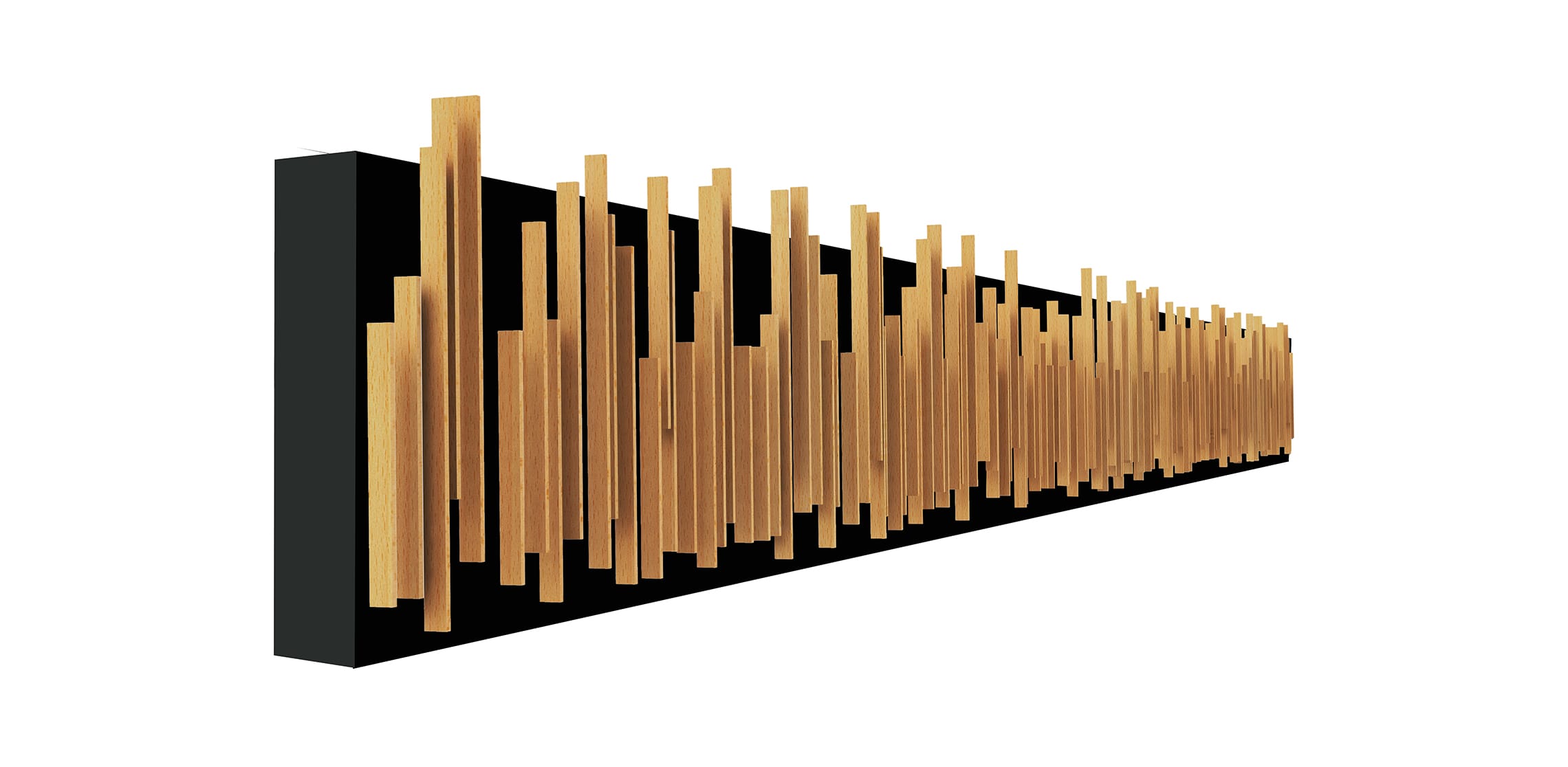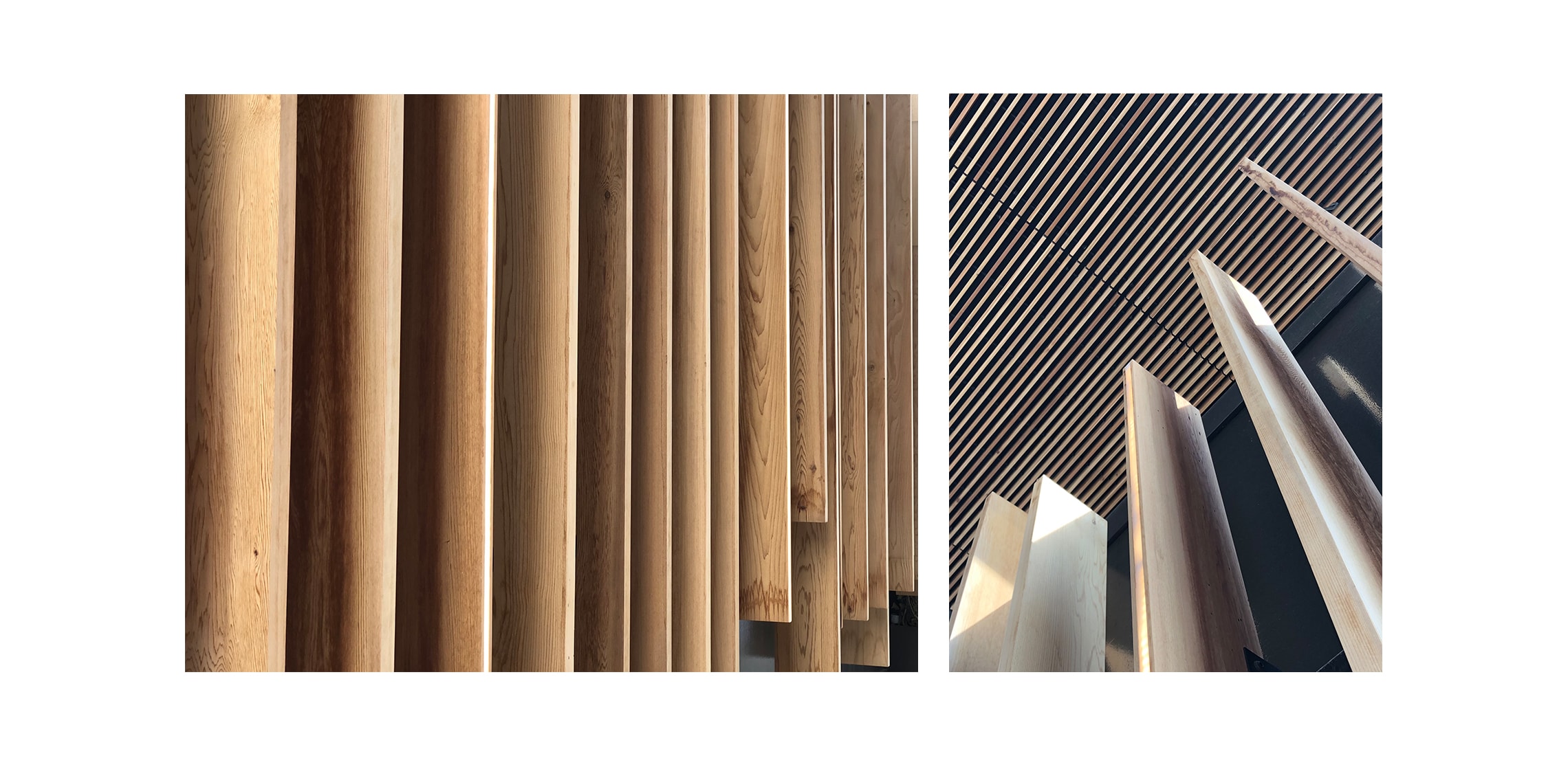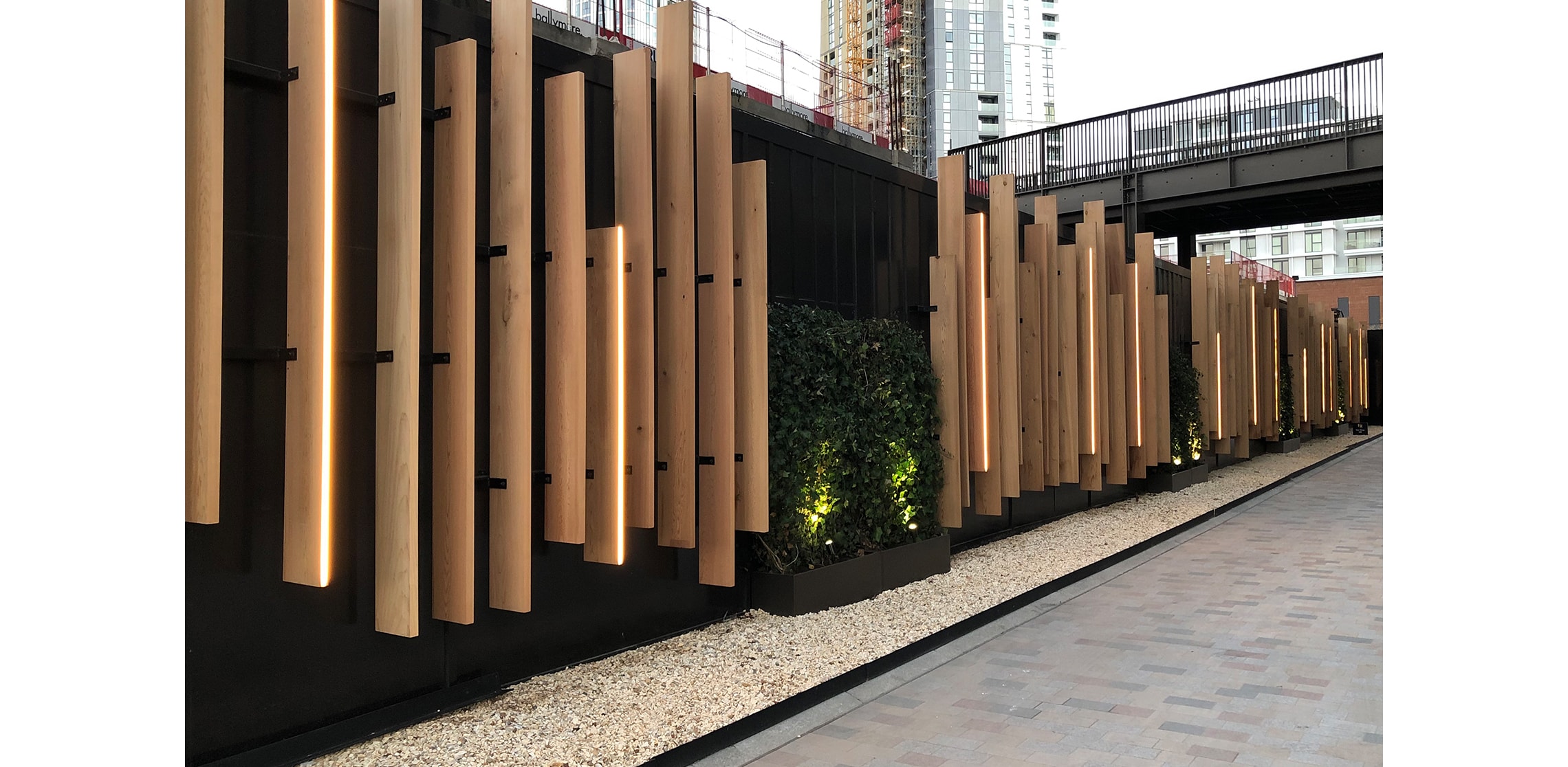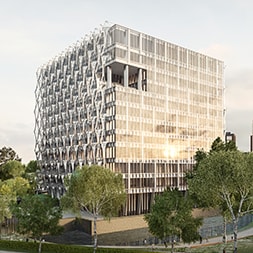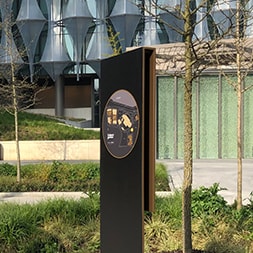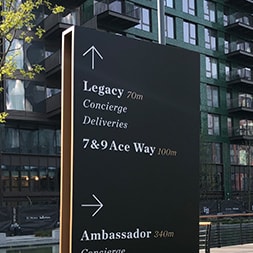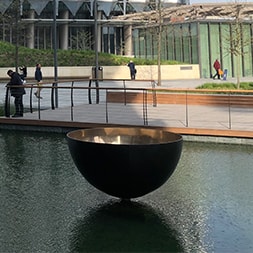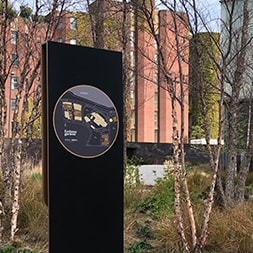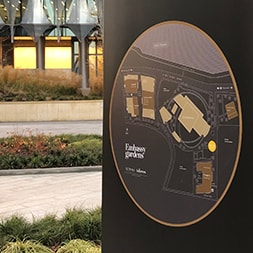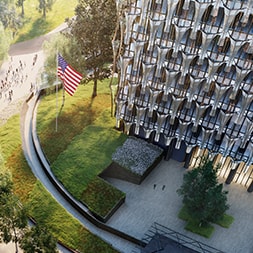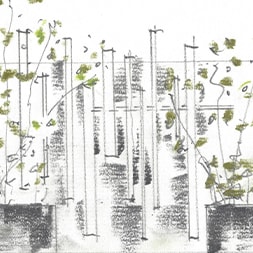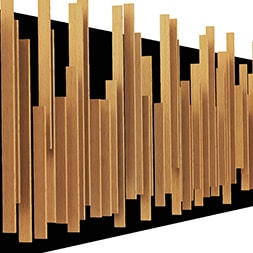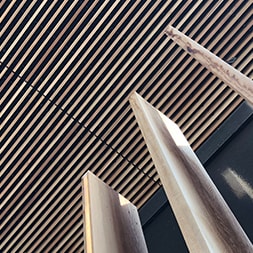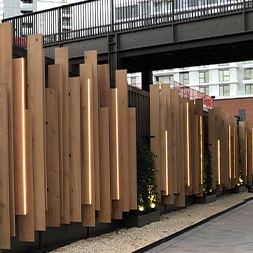Embassy Gardens is part of Sir Terry Farrell’s masterplan regeneration of Nine Elms. It includes apartments, shops, restaurants, cafes and the new park linking Vauxhall Bridge to Battersea Power Station.
The US Embassy was the landmark building that signalled that something new was happening in this part of London. Thames bank regeneration started in East London and has only gradually worked its way West. Where once stood industrial sites and storage units has emerged an entirely new development.
The area’s newness presents a challenge precisely because it has yet to establish a sense of place and natural flow. Of course, human flow in spaces is rarely natural; the aim is to manage it so it feels as if it is.
We were asked to help first time visitors and people not yet familiar with the area find their way and feel at home. To us this means establishing a clear, intuitive journey that makes visitors feel comfortable and relaxed.
We achieved it through clearly delineating and managing the arrival experience and then what we call threshold moments along the journey in, around and through the space.
You could say we work with signals as much as signs. The difference is that a sign exists whether anyone is looking or not. Signs are noticed when they are looked for. A signal exists when it is received by a person. In other words a signal is an exchange. Exchanges can be unconscious and when they are they’re powerful.
Our interventions in Embassy Gardens finesse visual markers to achieve delineation, direction or both – whichever is needed. They’re not signs but they still indicate where you are and where you want to go in a way that feels familiar even in an unfamiliar place.
We do this by looking at the predominant visual clues established by the architecture, exterior layout or landscape and sometimes interiors too. We pick up on textures, patterns and lighting.
It was this perspective that inspired us to create the sort of deconstructed traditional garden fence that used timber planks and plants all bought to life with occasional illuminated edges to front a structural screen that marks the boundary and the main arrival point. Spaces change at different times of the day because of changing light and footfall. Our response took account of this and in high intensity zones where directional and finding decisions are made, we used graphics to clearly sign options and directions.
